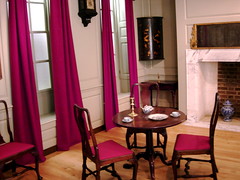
In 2007 I was asked, as part of an assignment for my MsC. in e-Learning to create a 'game' using Google Earth. This is what I wrote afterwards...
How would a Google Earth game work?. The strength of a Google Earth (GE) game lays in GE's superb ability to give dramatic, location-based hyperlinking. Exportable .kmz files (also know as 'Placemarkers') can be saved, extracted and embedded into blog posts, e-mailed to gamers and used as a device to send learners to specific locations. The problem, however, rests with what they do when they get there.
Assuming that you have successfully landed at a GE location, the question remains as to what to do. Are you there to identify a place? That isn't that challenging - GE layers for roads, historical monuments and other locations of note will allow a gamer to gather his location pretty quickly. Not to mention the fact that you fly there.
Beyond using each location as a means to help identify this person, GE seems almost redundant. Which is a shame. Such a powerful linking function could have done much more. For example, why not send gamers to obscure locations across the earth, embed clues nearby (using tags) which lead the gamer to search other forms of media for clues - not just the blog and GE?
For example, Flickr.com, (despite the best efforts of Yahoo to screw it up) remains one of the quintessential social media services. In addition to the great networking and RSS capabilities, Flickr also presents users with a fiendishly clever (and simple) means of interaction: notes.
Notes are, as the name suggests, small packets of information placed on top of an image with text files. Click on the image above for an example (from my account) of some notes that I left on some photos of the Geffrye Museum, London. As you can see from the notes I left on the image, in addition to text you can also leave hyperlinks to other locations: images, blogs, wikis, Google Earth placemarkers, Youtube videos.
You can export a Flickr image to a blog as I've done here, but, dissapointingly, you can't export the notes with it. Which is a damned shame.
What makes them powerful for a gaming application, is that the notes can be placed over specific places in photos - this means that a visual clue (something in the image) can be associated with a piece of text for a far more meaningful prompt to participate in a game than a simple question asked on a blog page.
Using Blogs as a 'launch pad' is good, but constantly directing the gamer back to the blog could be slightly repetitive. Rather than that, why not send them to a Flickr page? Which has a note? That note can require you to search a wikipedia entry for an answer with the connected area of the original Flickr image as a clue? That Wikipedia entry could lead to a Youtube video, which leads to a Twitter page, which leads to another blog, which leads to another Flickr page, which leads to...
Well, you get the idea. Rather than focusing on just two media streams (Blogs and GE) a proper linking game ('cos that's what it should be!) should drag you around the web, connectingseemingly disparate ideas, images and locations - allowing users to explore a range of media and enabling different learning styles and information acquisition styles to flourish. Furthermore, the simple sense of adventure (of being slightly lost) would be far more tangible. Running 'home' to a blog at each turn feels somewhat tedious and un-inventive for me.

No comments:
Post a Comment